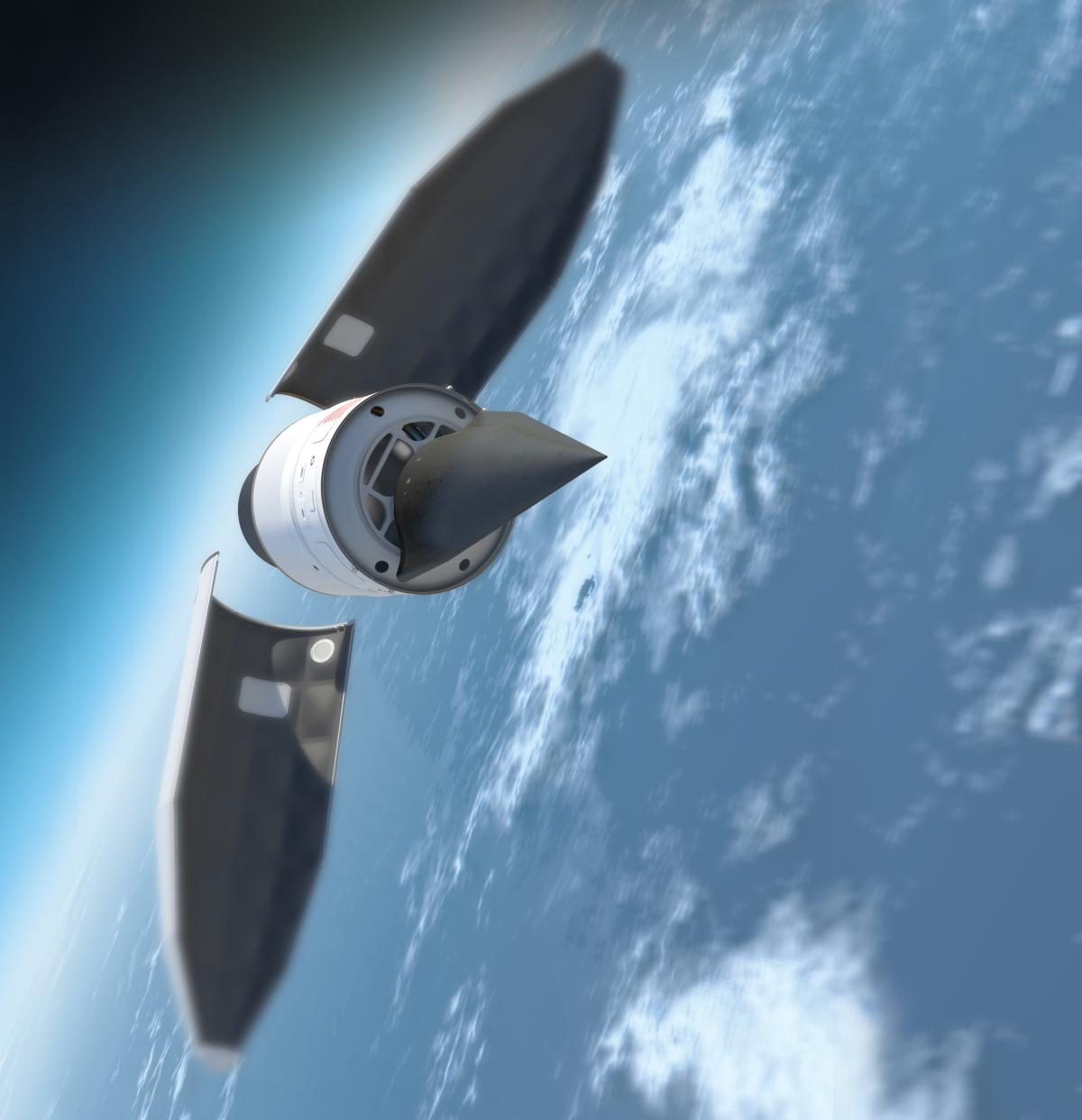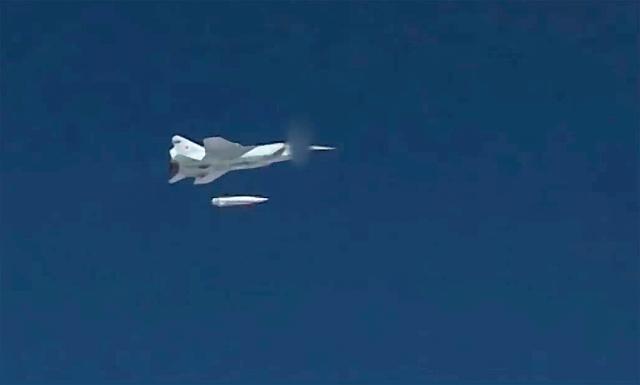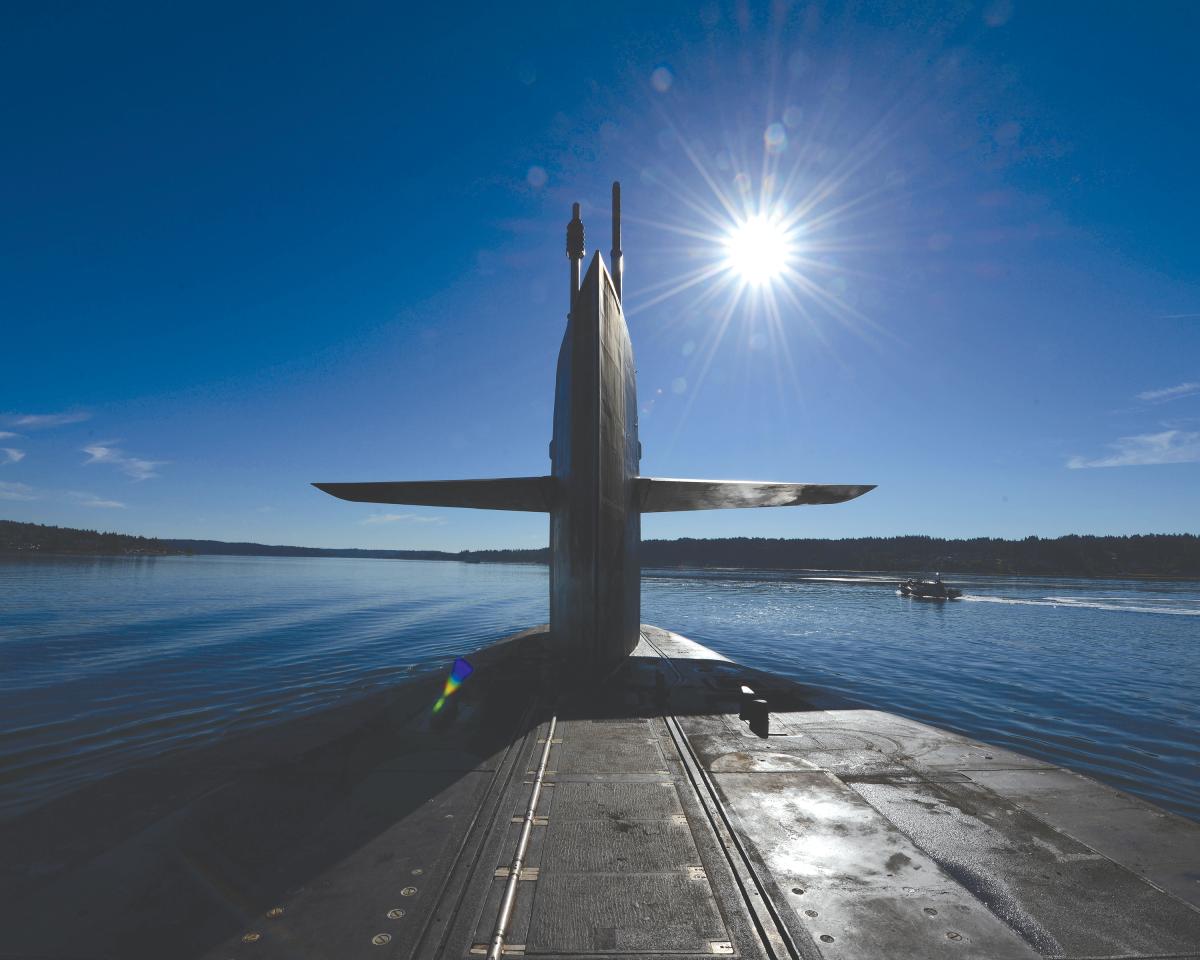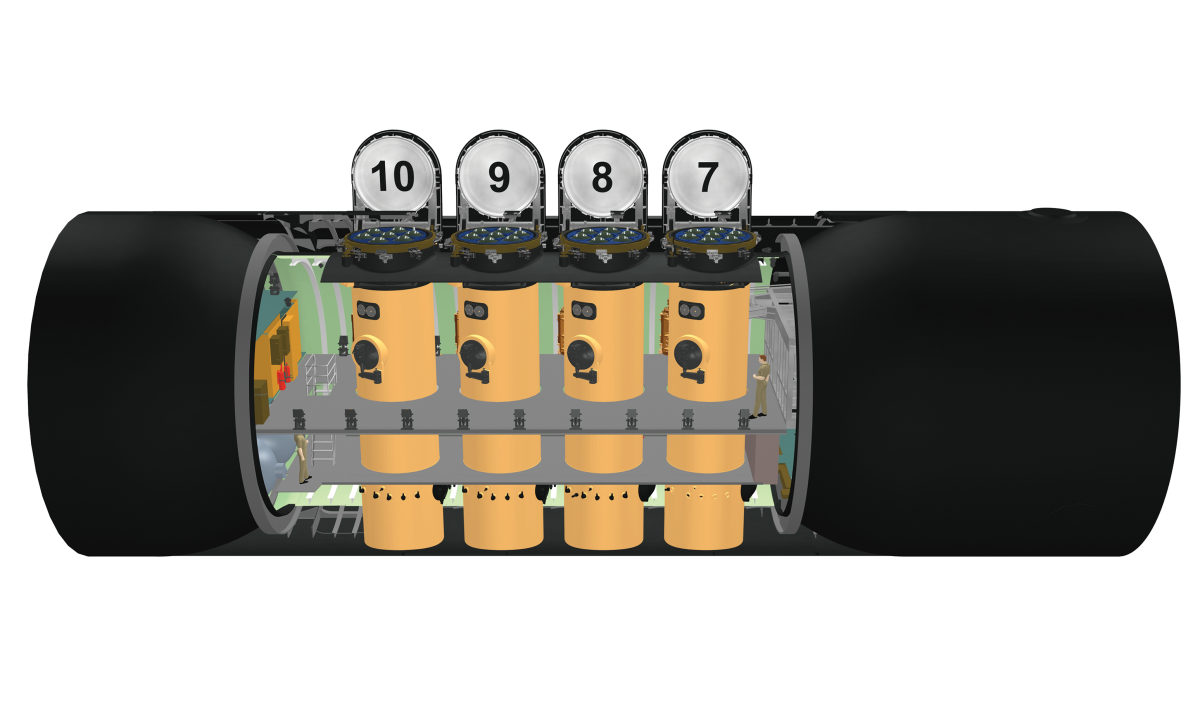By Lieutenant Andrea Howard, U.S. Navy
 Testifying before Congress, Undersecretary of Defense for Research and Engineering Michael Griffin outlined the consequences of the United States falling behind Russia and China on one of the most threatening breakthroughs today—hypersonic weapons: “Let them have their way, or go nuclear.”1
Testifying before Congress, Undersecretary of Defense for Research and Engineering Michael Griffin outlined the consequences of the United States falling behind Russia and China on one of the most threatening breakthroughs today—hypersonic weapons: “Let them have their way, or go nuclear.”1
The United States may face this dismal choice between incapacitation or nuclear escalation if attacked with hypersonic weapons without a credible, equal response. However, by developing more-precise technology—and specifically integrating hypersonic weapons with U.S. Navy submarines—the United States may gain an edge in developing the fastest, most precise weapons the world has ever seen.
Faster than Supersonic
The speed of sound at sea level is 720 miles per hour (mph). Hypersonic weapons travel faster than Mach 5—at least five times the speed of sound, around 3,600 mph, or one mile per second.2 Hypersonic cruise missiles (HCMs) use rockets or jets to provide aerodynamic lift and propulsion during flight.3 They are similar to but faster than existing missiles, such as the subsonic U.S. Tomahawk missile, which maxes out around 550 mph. A novel type also is being developed: hypersonic boost–glide vehicles. These travel atop ballistic missiles into the upper atmosphere, but unlike conventional reentry vehicles, they do not follow the ballistic trajectory. Instead, hypersonic glide vehicles (HGVs) coast extraordinarily fast through the thin upper atmosphere.4
While hypersonic weapons can carry conventional or nuclear warheads, they differ from existing technologies in three critical ways. First, because kinetic energy is a function of the square of velocity, a one-kilogram object delivered precisely and traveling multiples of the speed of sound can be more destructive than one kilogram of TNT.5 Second, the low-altitude path helps mask HCMs; when coupled with the curvature of the Earth, they are mostly invisible to early warning radars.6And third, HGVs can maneuver during flight; in contrast with the predictable path of ballistic-missile descent, they are more difficult to intercept, if even detected.7 By offering the precision of near-zero-miss weapons, the speed of ballistic missiles, and the maneuverability of cruise missiles, hypersonic weapons are a disruptive technology capable of striking anywhere on the globe in less than an hour.8
Foreign Developments in Hypersonic Technology
Before outlining a U.S. path forward with hypersonic weapons, the Pentagon must identify the international challenges it must navigate. Russia’s program is a logical starting point, as that country pushes to become the first to field an operational hypersonic weapon.9 President Vladimir Putin unveiled six new “invincible” weapon platforms in his March 2018 state-of-the-nation speech.10 Russia has successfully tested the air-to-ground hypersonic missile Kinzhal (“dagger”) multiple times with the MiG-31 fighter and is now mounting the Kinzhal on the Tu-22M3 strategic bomber.11
 SPUTNIKA MiG-31 Foxhound test-fires a Russian Kinzhal (“dagger”) hypersonic missile. The Mach 10 (~7,200 miles per hour) missile also can be deployed on the Tu-22M3 Backfire bomber.
SPUTNIKA MiG-31 Foxhound test-fires a Russian Kinzhal (“dagger”) hypersonic missile. The Mach 10 (~7,200 miles per hour) missile also can be deployed on the Tu-22M3 Backfire bomber.
In December, Russia completed the fifth test of the ship-based hypersonic Tsirkon (“zircon”) missile, which reaches a top speed of Mach 8.12 This platform poses a dual threat to land- and sea-based vehicles and sites. And on 26 December 2018, Moscow achieved what Putin deemed the pinnacle with the successful test of the Avangard (“vanguard”) HGV at Mach 20, the “perfect New Year’s gift for the country.”13 After launching atop an SS-19 Stiletto intercontinental ballistic missile (ICBM) at Dombarovsky in the Ural Mountains, the Avangard coasted unpowered for 3,500 miles to Kamchatka.14 The Kremlin intends to arm the glider with nuclear warheads and deploy it on at least two different types of ballistic missiles (including the RS-28 Sarmat ICBM) as early as 2020.15
China, too, is working on hypersonic technologies. Between 2014 and 2016 at the Wuzhai missile test center, China conducted at least seven tests of the DF-ZF glider (designated WU-14 by the Pentagon) at speeds and ranges up to Mach 10 and 1,250 miles respectively.16 In November 2017, the People’s Liberation Army Rocket Force completed two tests of the new DF-17 medium-range ballistic missile equipped with an HGV. With a range between 1,100 and 1,500 miles, this vehicle may become operational as early as 2020.17 And August 2018 marked the largest victory for China when it tested the Starry Sky-2, which boasts experimental hypersonic wave-rider technology. After initially being carried by a multistage solid-fuel rocket, the waverider aircraft used its own shockwaves as a lifting surface and reached speeds of Mach 5.5 for 400 seconds.18
As Russia and China break these technological barriers, other nations are following suit. Russia and India collaborated on the hypersonic BrahMos II antiship cruise missile (although the future of that program is in doubt).19 In February 2019, France became the first European nation seeking hypersonic weapons and announced Project V-MaX (experimental maneuvering vehicle), hoping to acquire a Mach 5 HGV by 2021.20 As the hypersonic arena increasingly influences 21st-century warfare, more nations likely will pursue HCM and HGV capabilities.
The U.S. Focus: Precision
The United States sometimes is accused of failing to keep pace with hypersonic weapons, both literally and figuratively. A Congressional Research Service report, Conventional Prompt Global Strike [CPGS] and Long-Range Ballistic Missiles, debunks the myth that DOD is not prioritizing hypersonics. The report notes the Pentagon increased its budget request from $201 million in fiscal year (FY) 2018 for the CPGS program to $278 million in FY 2019, part of a $1.9 billion allocation request for the next five years.21
Instead, the United States consciously deviates from its competitors by focusing on precision, rather than merely racing toward another nuclear delivery method. The boost-glide Advanced Hypersonic Weapon (AHW)—originally an Army program—has been tested at a range of 2,400 miles, whereas China’s HGV tests have been conducted at up to 1,500 miles.22 The budget requests tie into a long history of U.S. interest in precision weapons.
In the 1970s, when the Soviet Union began closing the gap in its nuclear capabilities, the Defense Advanced Research Projects Agency (DARPA) was founded to develop near-zero-miss weapons and attain a conventional advantage over the USSR. The U.S. married laser targeting and GPS receivers with cruise missiles and air-dropped munitions.23 The opportunity to showcase these precision-guided weapons came with the 1991 Gulf War, and the world paid attention. Amid attempts to regain the conventional advantage today, the Pentagon’s new goal is to strike anywhere on Earth more quickly and accurately than other nations. Accordingly, the 2001 Nuclear Posture Review first demonstrated interest in using CPGS (and hypersonic weapons) to achieve and maintain the United States’ conventional advantage.24
The development of nuclear-armed hypersonic vehicles does not materially alter the status quo; a new nuclear delivery method changes little in international competition. But hypersonic technologies present a unique avenue for Russia and China to open a conventional gap. If Moscow and Beijing followed the U.S. model and shifted their focus to precision, the development of non-nuclear hypersonic glide vehicles could be the next big breakthrough, exposing U.S. targets previously invulnerable to conventional weapons. At present, though, the Russian Avangard and Chinese DF-ZF are not game-changing conventional threats.
Fly (Hypersonic) Navy!
In A Design for Maintaining Maritime Superiority, Version 2.0, the Chief of Naval Operations called for the Navy to “develop and field an offensive hypersonic weapon by 2025.” The Navy is not alone in its hypersonic efforts—in addition to the AHW, DARPA and Lockheed Martin are developing the hypersonic air-breathing weapon concept (HAWC) and tactical boost-glide (TBG) programs for the Air Force.25 Compared with the other services, however, the Navy has the potential for more survivable, adaptable options.
Submarines offer the best platform to achieve this timeline, based on the submarine force’s history of adapting new missile technologies, whether the Tomahawk cruise missile or Trident II D5 ballistic missile. During the past 25-plus years, the Navy has relied on sea-based Tomahawks to attack targets within roughly 1,500 nautical miles. The 1994 Nuclear Posture Review led the Navy to convert four Ohio-class submarines from ballistic-missile boats (SSBNs) to guided-missile boats (SSGNs), carrying 7 Tomahawks in each of as many as 22 Trident launch tubes—up to 154 cruise missiles per SSGN. A new refit of the USS Ohio(SSGN-726), Michigan (SSGN-727), Florida (SSGN-728), and Georgia (SSGN-729) to accommodate HCMs would be plausible and justifiable.26 Accounting for mission profile requirements, a Mach 5 HCM could hit a target 500 nautical miles away in 15 minutes or less, compared with as much as two hours for a Tomahawk. This would provide a prompt theater strike capability.
 U.S. NAVY (KENNETH TAKADA)The USS Ohio (SSGN-726), shown, and three other Ohio-class missile submarines converted from ballistic- to guided-missile delivery platforms, could join attack submarines from the Virginia class (Block V and later) as hypersonic weapon platforms for the Conventional Prompt Global Strike program.
U.S. NAVY (KENNETH TAKADA)The USS Ohio (SSGN-726), shown, and three other Ohio-class missile submarines converted from ballistic- to guided-missile delivery platforms, could join attack submarines from the Virginia class (Block V and later) as hypersonic weapon platforms for the Conventional Prompt Global Strike program.
HGVs, however, may offer a better long-term route for delivering hypersonic technology to submarines. Around 2003, the Navy first explored use of submarine-launched intermediate-range ballistic missiles as part of CPGS. Although Congress in 2008 combined CPGS funding into a single, DOD-wide account, the Navy in 2012 began courting industry proposals and strongly advocating for submarine-launched CPGS technology.27 In 2014, a booster explosion in an Army AHW test prompted the Pentagon to get the Navy involved in the project and modify the boost-glide AHW for submarine missile tubes. Accordingly, the Congressional Research Service says, “A submarine-launched missile armed with the AHW is now the leading contender for the conventional prompt strike mission.”28
Somewhat confusingly, although the AHW is an HGV mated to a ballistic missile, it would be launched from SSGNs and attack submarines, not only SSBNs. Vice Admiral Terry Benedict, director of the Strategic Systems Program, announced a successful first test of this project—the Conventional Prompt Strike Flight Experiment-1 (CPS FE-1)—on 30 October 2017, from a land-based facility in Hawaii.29The Virginia Payload Module on Block V and later Virginia-class attack submarinescomprises a series of midbody launch tubes that specifically could be outfitted to carry the boost-glide weapons.30 As the Columbia-class SSBNs enter the fleet in the 2030s, their inclusion in the program would also be probable.31
 GENERAL DYNAMICSThe Navy soon will field the Virginia Payload Module on some Block V and later Virginia-class attack submarines. The system, built around four tubes carried amidships, could give the class the capability to launch the Advanced Hypersonic Weapon, thanks to a tube diameter large enough to carry a booster the size of a Trident missile.
GENERAL DYNAMICSThe Navy soon will field the Virginia Payload Module on some Block V and later Virginia-class attack submarines. The system, built around four tubes carried amidships, could give the class the capability to launch the Advanced Hypersonic Weapon, thanks to a tube diameter large enough to carry a booster the size of a Trident missile.
Succeed Fast
Military leaders should clearly define the offensive role of such weapons, which are moving out of the conceptual phase and into deployability. Strategists must identify which missions, areas, and (subsurface) platforms will receive hypersonic weapons, rather than amorphously deeming HCMs and HGVs useful. Tactical thinkers and leaders must update orders of battle to account for timing and target selection; high-value and fleeting targets will be priorities at the outbreak of conflict, and previously hardened or highly mobile targets now could be considered vulnerable. Such decisions will help shape a successful acquisition plan.
In addition, the United States must not accept a defenseless stance against hypersonic weapons, despite the inherent difficulties of defending against their speed and maneuverability. The Patriot and Terminal High-Altitude Area Defense (THAAD) point-defense systems, for example, already have proved somewhat effective at protecting small areas against ballistic missiles’ high speeds.32 Thus, there is reason to believe THAAD can be adapted to account also for hypersonic weapons’ maneuverability, at least within a limited defensive perimeter. Gaps in the Ground-Based Midcourse Defense system that protects North America will be amplified by hypersonic weapons, and area defense will prove quite impossible for now. For perspective, a RAND study suggests that current radars would only detect an HGV six minutes prior to impact, less than half the time available to spot a ballistic missile.33
The United States must adapt—through its survivable submarine and deterrence assets—to the impending wave of hypersonic technologies. As the tradition of arms control weakens with the breakdown of the Intermediate-Range Nuclear Forces (INF) agreement, it would be naïve to anticipate anything other than full-fledged weapon development by Russia and China in the coming decades. Despite these challenges, the opening of the Chief of Naval Operations’ Design for Maintaining Maritime Superiority asserts that the “Navy will be ready to conduct prompt and sustained combat incident to operations at sea.” The bottom line is that hypersonic weapons will determine who precisely is “prompt” enough in 21st-century conflict.
No comments:
Post a Comment